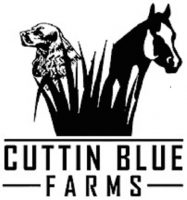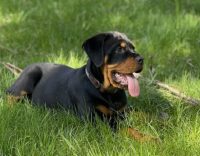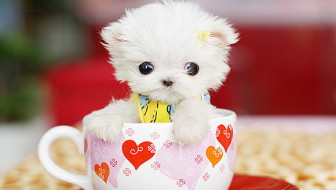Tibetan Mastiff Origins
The Tibetan Mastiffs are an ancient, primitive breed, considered by many to be the basic stock from which all mastiffs and mountain dogs and most modern large working breeds have developed. They are not true mastiffs and a more descriptive landrace name would be “Tibetan mountain dog”. They retain instincts such as pack behavior that would be needed to survive in their native Tibet. They are one of the few breeds that retain a single estrus like wild canids such as wolves, even at lower altitudes and in temperate climates, far different from their origins. While Marco Polo was told of dogs as tall as donkeys with voices as loud as lions, and King George IV owned a pair, it was after 1980 that the popularity of the breed began to rise worldwide.
Sizes
The dogs are typically large, but not gigantic, and males can reach heights up to 83 cm (33in). Dogs bred in Western kennels weigh between 45–72 kg (100-160 pounds). Some kennels also differentiate between two types, the Do-khyi or “nomad” type, and the Tsang-khyi (“dog from Tsang”) or “monastery” type. The Tsang-khyi, traditionally gifted to monasteries, is larger, heavier, with more massive bones and coat, and more facial wrinkling. A single litter may contain both types. Some breeders consider the larger “Tsang-khyi” or the “dog from Tsang” to be closer to the ancestral dogs and have been trying to breed back to recover the original, primitive type. Enormous dogs have recently been produced by some Chinese and Western breeders that could not serve their traditional functions of herding and guarding and whose feeding and upkeep by nomadic tribes would be unworkable.
Colors
There are eight standard colors recognized by the AKC: black, blue-gray, brown, black and tan, blue-gray and tan, brown and tan, red gold, red gold sable. Standard markings are white. Their thick double coat has a single molt in late winter or early spring, although it should be kept brushed year round. A white marking over the chest signifies a brave heart. The white color is actually a pale tan, and it is said that only one breeder is selecting for the rarest pure white colored dogs.
 Temperament
Temperament
Aloof, imposing, watchful, and intimidating: these are guard dogs supreme. They are highly protective of both property and family, with a streak of strong-willed independence. They are loyal and devoted, but notorious for not coming when called. The generations of breeding as guard dogs have resulted in a disposition and temperament of fearlessness, controlled strength, initiative, and extreme stubbornness, tempered with gentleness, loyalty, and patience. This breed needs a firm hand in training and would not be suitable for first-time owners.
Health
Unlike most large dogs, these have a relatively long life expectancy of 10-14 years. Like most large breeds, there can be elbow or hip dysplasia. Although there are fewer genetic health problems than other breeds, there can be hypothyroidism, ectropion, entropion, skin allergies, Demodex, malocclusion, missing teeth, cardiac problems, cataracts, epilepsy, progressive retinal atrophy (PRA) and Canine inherited demyelinative neuropathy (CIDN).
Historical Function
The “Do-Khyi” name for this breed, translated as “door-guard dog”, or “dog which may be tied”, refers to its use as a guardian of flocks, herds, tents, and villages, as well as monasteries and palaces. Traditionally, TIBETAN MASTIFFS are kept tied to the gates of the house or monastery, or to stakes in the nomad camps, and they are let loose at night, leading to their habit of barking at night when outside. However, they tend to be quiet when kept indoors. In addition, when the flocks moved to higher summer pasture, the Tibetan Mastiffs remained behind to protect the children and the tents. For generations, they have worked as a guardian of yak, sheep and, more importantly, women and children, always as a protector and not a killer. The ancestral dogs that traveled with ancient nomadic tribes were allowed to interbreed with the other native dogs producing the breed that existed in historical times.






